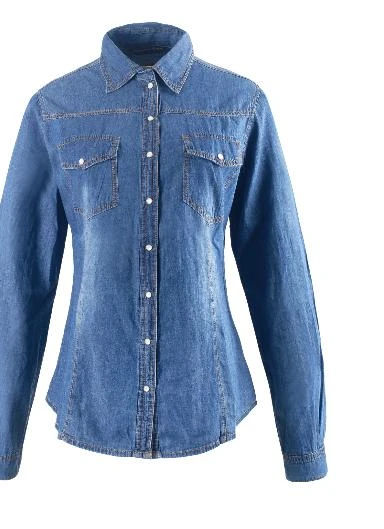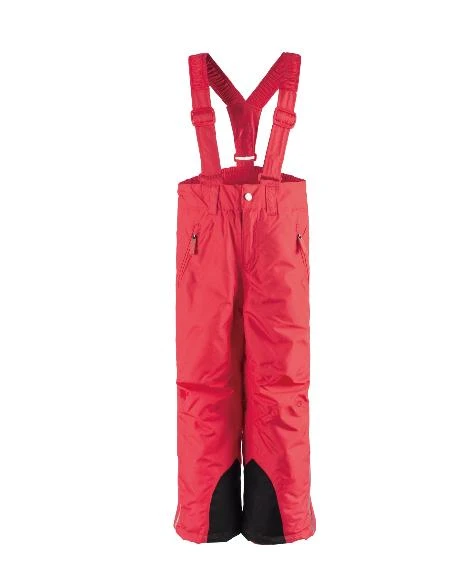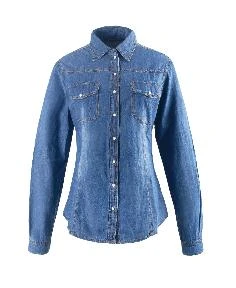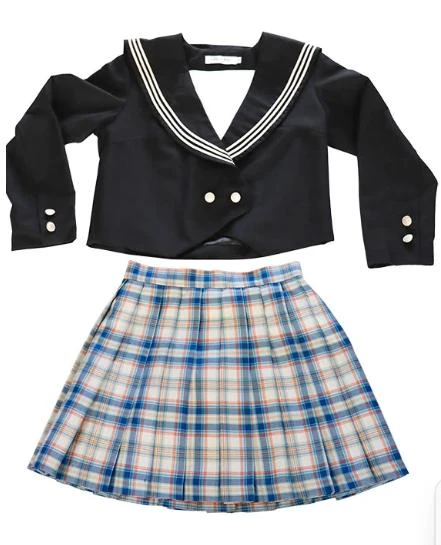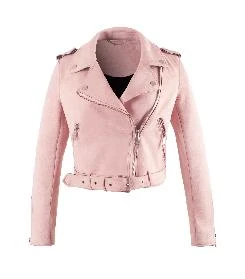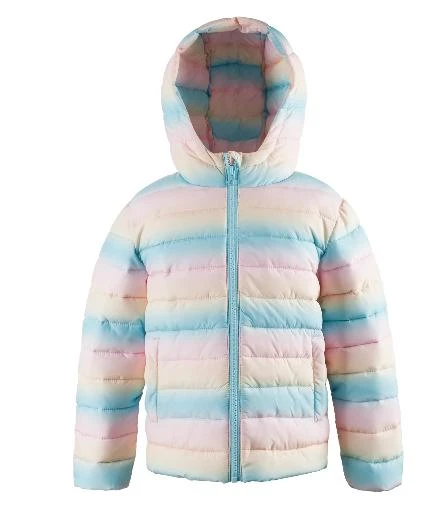In the rapidly evolving landscape of children's outdoor apparel, the Children's Ski Suit stands as a testament to innovation, safety, and performance. As winter sports gain wider popularity, particularly among younger demographics, the demand for specialized, high-quality gear has soared. This comprehensive guide delves into the intricate world of Children's Ski Suit manufacturing, exploring industry trends, technical specifications, real-world applications, and the strategic advantages offered by leading manufacturers. We aim to provide an authoritative resource, grounded in expertise and practical experience, to empower consumers and industry professionals alike.
The Growing Market for Children's Winter Sports Apparel
The global market for children's outdoor and sports apparel is experiencing robust growth, driven by increased participation in winter sports and a heightened focus on child safety and comfort in extreme conditions. According to a recent report by Grand View Research, the global outdoor apparel market size was valued at USD 15.3 billion in 2022 and is expected to expand at a compound annual growth rate (CAGR) of 6.2% from 2023 to 2030, with children's segments showing a particularly strong upward trajectory due to parental investment in active lifestyles for their offspring. This growth underscores the critical need for advanced materials and manufacturing techniques in products like the Children's Ski Suit. Key trends include a shift towards sustainable materials, enhanced thermal insulation properties without added bulk, superior waterproofing and breathability, and integrated safety features such as reflective elements and growth systems that allow the suit to extend with the child.
Parents and guardians are increasingly seeking out Children's Ski Suit options that offer not just warmth, but also unparalleled protection against the elements, freedom of movement, and durability to withstand the rigors of active play and learning on the slopes. This demand has spurred manufacturers to invest heavily in research and development, resulting in ski suits that are lighter, warmer, and more resilient than ever before.
Understanding the Technical Parameters of a High-Performance Children's Ski Suit
A truly effective Children's Ski Suit is a marvel of textile engineering. Its performance is quantifiable through several key technical parameters that define its protective capabilities and comfort level. Understanding these specifications is crucial for making informed purchasing decisions and appreciating the advanced design involved.
Core Technical Specifications:
- Waterproof Rating (Hydrostatic Head): Measured in millimeters (mm), this indicates the height of a column of water the fabric can withstand before moisture penetrates. For a reliable Children's Ski Suit, a rating of 10,000mm to 20,000mm is generally recommended for optimal protection in varying snow conditions, with 15,000mm+ being ideal for heavy snow or rain.
- Breathability Rating (MVTR - Moisture Vapor Transmission Rate): Measured in grams per square meter per 24 hours (g/m²/24h), this denotes how much water vapor (sweat) can escape through the fabric. High breathability (e.g., 10,000 g/m²/24h and above) is vital to prevent internal condensation and maintain comfort, especially during high-activity levels. An overly warm child will sweat, and if that moisture can't escape, they'll feel cold and damp.
- Insulation Type and Weight: Common insulation materials include synthetic fibers like Thinsulate™, PrimaLoft®, or proprietary blends. Weight is typically measured in grams per square meter (gsm) or ounces per square yard. A heavier insulation (e.g., 80-150 gsm in the body, 60-100 gsm in sleeves/hood) provides more warmth. The choice between down and synthetic insulation often comes down to warmth-to-weight ratio, packability, and performance when wet (synthetics generally perform better when damp).
- Fabric Denier (D): Denier measures the fiber thickness, indicating durability. Higher denier numbers (e.g., 400D for high-wear areas, 100D-200D for main body) signify stronger, more tear-resistant fabrics, crucial for a Children's Ski Suit that will endure scrapes and falls.
- Seam Sealing: Critically taped seams mean only the most exposed seams (shoulders, hood, neck) are sealed, while fully taped seams ensure every seam is sealed with a waterproof tape, offering maximum water resistance. For a top-tier Children's Ski Suit, fully taped seams are preferred to ensure no water ingress through stitching holes.
- DWR Finish (Durable Water Repellent): An external coating that causes water to bead up and roll off the fabric surface, preventing saturation. While it wears off over time, it's a critical first line of defense.
To illustrate, consider the following typical parameter ranges for different tiers of Children's Ski Suit:
| Parameter | Entry-Level Suit | Mid-Range Suit | High-Performance Children's Ski Suit |
|---|---|---|---|
| Waterproof Rating | 5,000 - 8,000 mm | 10,000 - 15,000 mm | 15,000 - 20,000+ mm (e.g., Gore-Tex, Pertex Shield) |
| Breathability Rating | 5,000 g/m²/24h | 10,000 g/m²/24h | 15,000 - 20,000+ g/m²/24h |
| Insulation Weight (Body) | 60-80 gsm | 100-120 gsm | 120-150 gsm (or high-loft down) |
| Seam Sealing | Critically Taped | Critically Taped to Fully Taped | Fully Taped |
| Fabric Denier (Avg.) | 70D - 100D | 150D - 200D | 200D - 400D (Reinforced Knee/Seat) |
| Key Features | Basic cuffs, elastic waist | Snow skirt, adjustable cuffs, boot gaiters | Helmet-compatible hood, grow system, reflective details, multiple pockets, pit zips |
These parameters collectively determine the suitability of a Children's Ski Suit for different levels of activity and environmental conditions. Manufacturers leverage advanced membrane technologies (e.g., polyurethane [PU] coatings, ePTFE membranes like Gore-Tex) and fabric constructions (e.g., two-layer, three-layer laminates) to achieve these performance metrics.
Application Scenarios and Performance Advantages
The primary application scenario for a Children's Ski Suit is, naturally, skiing and snowboarding. However, its utility extends to a broader range of winter outdoor activities. These suits are meticulously designed to perform optimally in harsh, cold, and wet environments, offering numerous advantages:
- Thermal Regulation: Superior insulation combined with breathable fabrics ensures children stay warm without overheating, preventing the cycle of sweating and then chilling.
- All-Weather Protection: High waterproof and windproof ratings shield children from snow, rain, and biting winds, keeping them dry and comfortable.
- Enhanced Durability: Reinforced fabrics in high-wear areas like knees, seats, and cuffs significantly extend the lifespan of the suit, making it capable of withstanding the inevitable tumbles and rough play.
- Safety Features: Integrated reflective elements enhance visibility in low light conditions, while adjustable features like helmet-compatible hoods, wrist gaiters, and snow skirts prevent snow ingress and ensure a secure fit. Many modern Children's Ski Suit designs also adhere to safety standards like EN 14682 for drawstrings and cords, minimizing entanglement risks.
- Freedom of Movement: Articulated knees and elbows, along with ergonomic cuts, allow for unrestricted movement, essential for learning and progressing in winter sports.
Beyond the slopes, a high-quality Children's Ski Suit is ideal for:
- Winter hiking and snowshoeing
- Sledding and tubing
- Building snowmen and general snow play
- Cold-weather school trips or outdoor education programs
In all these scenarios, the suit's ability to provide sustained warmth, dryness, and protection is paramount, ensuring children can fully enjoy their winter experiences safely and comfortably. For example, in a ski school setting, a child wearing a properly fitting, waterproof, and breathable Children's Ski Suit will be more attentive and less prone to fatigue or discomfort due to cold, enhancing their learning experience significantly.
The Meticulous Manufacturing Process of a Children's Ski Suit
Producing a high-performance Children's Ski Suit is a sophisticated process that blends advanced textile technology with precise garment construction techniques. Unlike industrial processes such as casting or forging found in heavy machinery, garment manufacturing relies on specialized cutting, sewing, and sealing methods to achieve optimal performance.
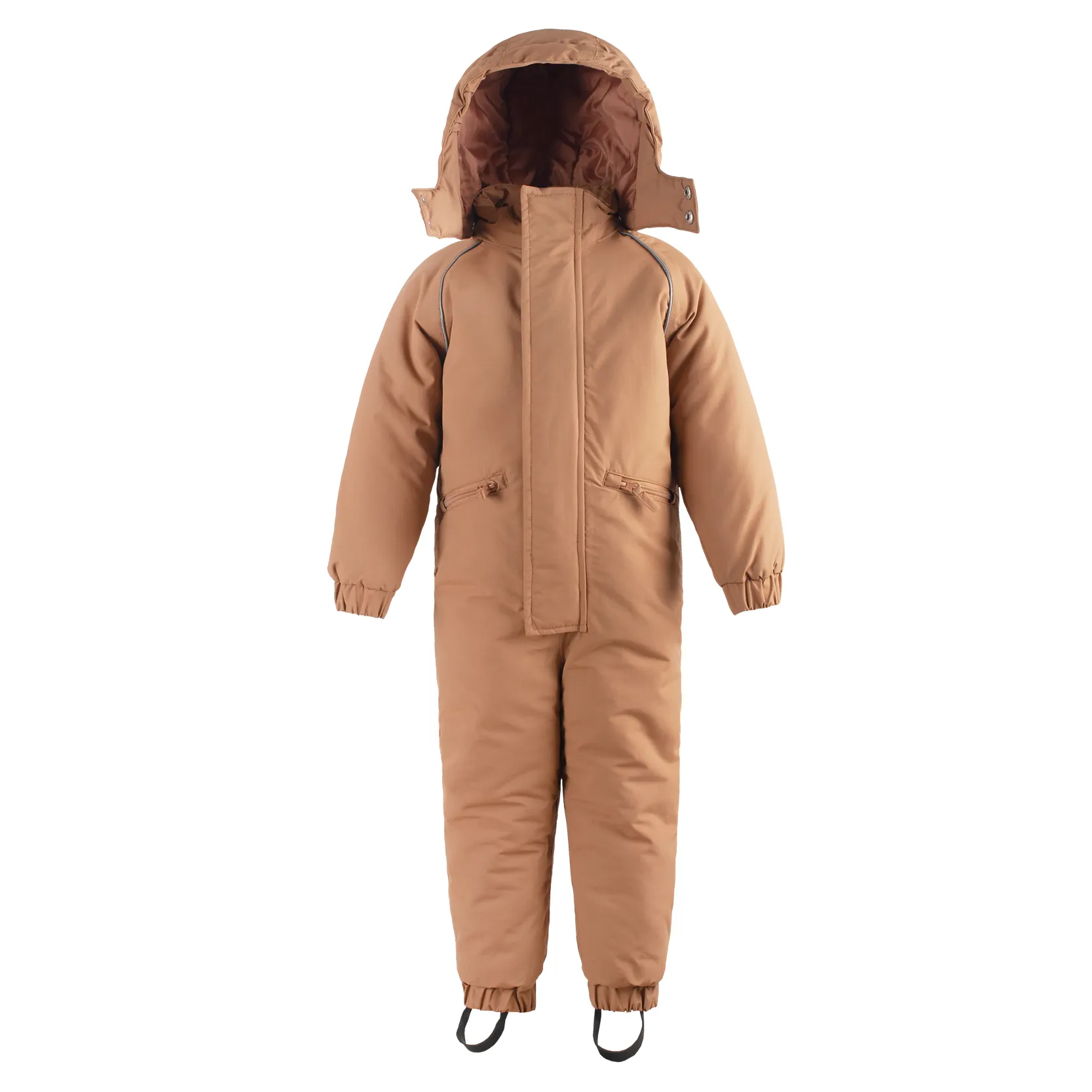
Here's a detailed breakdown of the key stages:
1. Design and Pattern Development
The journey begins with conceptual design, focusing on ergonomics, safety, aesthetics, and performance. Designers consider the unique needs of children, including "grow-with-me" features, ease of movement, and bright, appealing colors. Patterns are then meticulously drafted, often using CAD (Computer-Aided Design) software, to ensure precise fit and minimize fabric waste. This stage also involves selecting the optimal fabric layers and insulation types for different body zones.
2. Material Sourcing and Inspection
High-quality materials are critical. This includes:
- Outer Shell Fabric: Typically durable nylon or polyester with a DWR finish, often laminated with a waterproof/breathable membrane (e.g., PU membrane, ePTFE such as Gore-Tex).
- Insulation: Synthetic loose-fill or sheet insulation (e.g., PrimaLoft, Thinsulate) selected for its warmth-to-weight ratio and performance when wet.
- Lining Fabric: Soft, breathable fabrics like polyester taffeta or fleece, designed for comfort and moisture-wicking.
- Accessories: Waterproof zippers (YKK AquaGuard), snaps, elastic, hook-and-loop fasteners, reflective trims, and durable hardware.
All incoming materials undergo rigorous quality checks to ensure they meet specified technical parameters, including hydrostatic head tests for waterproofness, MVTR tests for breathability, and tear strength tests. Compliance with standards like OEKO-TEX Standard 100 for harmful substances is also verified at this stage, ensuring the materials are safe for children's wear.
3. Automated Cutting
Using multi-ply cutting machines or laser cutters, fabric layers are precisely cut according to the digital patterns. This automation ensures accuracy, consistency, and efficient material utilization, minimizing waste which aligns with sustainable manufacturing practices.
4. Embellishment and Pre-Assembly
Before main assembly, any logos, brand badges, or decorative elements are embroidered or heat-transferred onto the cut fabric panels. Specialized machines are used for these tasks to ensure durability and aesthetic quality. Pockets, zippers, and other smaller components may also be attached to individual panels at this stage.
5. Specialized Sewing and Assembly
This is the core of garment production. Highly skilled sewers use industrial sewing machines tailored for different tasks:
[Flow Arrow: Panels & Components] → [Assembly: Sewing Sections] → [Seam Sealing] → [Final Assembly]
- Panel Joining: Different fabric panels are sewn together using specialized stitches (e.g., flat-felled seams for durability, overlock stitches for bulk reduction). The complexity of a Children's Ski Suit often requires articulated patterns for better movement.
- Zipper Insertion: Waterproof zippers are meticulously sewn into place, often requiring specialized presser feet and precision.
- Feature Integration: Internal snow skirts, adjustable cuffs, helmet-compatible hoods, and inner gaiters are expertly integrated.
Unlike industrial "casting" or "forging" processes, garment manufacturing's equivalent precision comes from needle and thread, demanding extreme accuracy to ensure seam integrity and performance.
6. Seam Taping and Sealing
This is a critical step for waterproof performance. After sewing, all critical seams (or all seams for fully taped suits) are covered with a heat-applied waterproof tape. Specialized hot-air seam sealing machines melt an adhesive tape over the stitched lines, creating an impermeable barrier where the needle punctures would otherwise allow water to seep through. This process ensures the waterproof membrane's integrity is maintained across all joins.
7. Quality Control and Testing
Each Children's Ski Suit undergoes stringent quality control checks at various stages. Final inspection includes:
- Visual Inspection: Checking for defects, loose threads, uneven stitching, and proper alignment of components.
- Functional Testing: Ensuring zippers operate smoothly, adjustments work correctly, and pockets are secure.
- Waterproof Spray Test: Garments may be subjected to a spray test to confirm seam sealing effectiveness and overall water repellency.
- Dimensional Checks: Verifying that the finished garment meets the specified sizing and pattern dimensions.
Manufacturers often adhere to international quality management standards like ISO 9001 to ensure consistency and reliability throughout their production lines. Furthermore, compliance with ASTM F1891 (Standard Specification for Non-Lining Ski Apparel) and EN 14682 (Safety of children's clothing - cords and drawstrings) is a hallmark of reputable producers.
8. Finishing and Packaging
The final steps involve steaming or pressing to remove wrinkles, attaching hang tags with care instructions and product information, and carefully folding and packaging the Children's Ski Suit for shipment.
The typical service life of a high-quality Children's Ski Suit can range from 3 to 5 years, or until the child outgrows it, provided proper care and maintenance. Its longevity is directly linked to the durability of its materials, the precision of its manufacturing, and adherence to industry standards.
Manufacturer Comparison: Selecting the Right Children's Ski Suit Partner
Choosing a manufacturer for a Children's Ski Suit involves evaluating their expertise, material sourcing, technological capabilities, and commitment to quality and ethical practices. Here's a comparative overview highlighting key differentiators:
| Feature/Aspect | Manufacturer A (Large-Scale OEM) | Manufacturer B (Specialized Boutique) | Manufacturer C (Emerging Sustainable Producer) |
|---|---|---|---|
| Production Volume Capability | High (10,000+ units/month) | Medium (1,000-5,000 units/month) | Low to Medium (500-2,000 units/month) |
| Material Sourcing Focus | Cost-effective, wide range (including Gore-Tex licenses) | Premium, performance-driven materials (specific membrane partners) | Recycled, Bluesign® certified, PFC-free DWR |
| Customization Options | Extensive (ODM/OEM, private label, design iterations) | Moderate (modifications to existing designs, material swaps) | Limited (focus on sustainable innovations within core designs) |
| Certifications & Compliance | ISO 9001, BSCI, OEKO-TEX Standard 100 | ISO 9001, often specialized material certifications | Bluesign®, GRS (Global Recycled Standard), Fair Trade Certified |
| Lead Time (Average) | 90-120 days (for new designs) | 60-90 days | 75-100 days |
| Pricing Model | Volume-based, competitive | Premium for specialized features/materials | Reflects sustainable sourcing/processes |
When considering a partner for manufacturing your Children's Ski Suit line, it's crucial to align their capabilities with your brand's values, target market, and production scale. Reputable manufacturers often highlight their certifications, such as ISO 9001 for quality management, and partnerships with leading material suppliers like Gore-Tex or Thinsulate, which vouch for their expertise and authority in the field.
Customization Solutions for Your Children's Ski Suit Line
For brands looking to enter or expand in the children's winter apparel market, customization is key to standing out. Manufacturers offer various levels of customization for a Children's Ski Suit, allowing brands to create unique products that reflect their identity and meet specific market demands.
- OEM (Original Equipment Manufacturer): You provide the design and specifications, and the manufacturer produces the garments exactly as requested. This is ideal for brands with established design teams.
- ODM (Original Design Manufacturer): The manufacturer offers existing designs that you can brand and slightly modify (e.g., color, fabric choice, minor feature tweaks). This is a faster route to market.
- Material Customization: Selecting specific waterproof/breathable membranes (e.g., opting for a Gore-Tex laminate for premium branding), insulation types, and outer shell fabrics (e.g., recycled polyester).
- Feature Integration: Adding specific elements like "grow-cuffs" (extendable sleeves/legs), helmet-compatible hoods, unique pocket configurations, or integrated Recco reflectors for avalanche safety.
- Branding & Aesthetics: Custom logos, zipper pulls, embroidery, unique color palettes, and graphic prints.
- Sizing & Fit: Developing custom size charts to cater to specific regional anthropometrics or unique fit preferences (e.g., slim fit, relaxed fit).
The ability to offer comprehensive customization, from technical fabric choices to safety features, demonstrates a manufacturer's deep expertise and flexibility in producing a truly bespoke Children's Ski Suit. For instance, a brand focusing on eco-conscious consumers might prioritize manufacturers capable of sourcing Bluesign® certified fabrics and PFC-free DWR treatments, showcasing their commitment to environmental responsibility.
Real-World Application Cases and Customer Trust
The true measure of a Children's Ski Suit's quality and a manufacturer's reliability lies in its real-world performance and customer satisfaction. Leading garment manufacturers often collaborate with renowned outdoor brands, supplying them with high-performance children's ski apparel that consistently receives positive feedback.
Case Study: Alpine Adventures Kids Program
A prominent ski resort's "Alpine Adventures Kids Program" partnered with a specialized garment manufacturer (similar to Manufacturer B in our comparison) to equip their junior instructors and frequent attendees. The objective was to provide durable, highly protective, and comfortable Children's Ski Suit models that could withstand daily use in challenging mountain conditions and frequent washing cycles.
- Solution Provided: The manufacturer supplied a custom-designed Children's Ski Suit featuring a 20,000mm waterproof / 15,000 g/m²/24h breathability rating, fully taped seams, 120gsm synthetic insulation, and reinforced knee/seat panels (400D nylon). Each suit also incorporated a "grow-system" to accommodate growth over two seasons.
- Results: After a full winter season, feedback from instructors and parents was overwhelmingly positive. Children reported staying dry and warm even during heavy snowfall and prolonged periods of play. The durability exceeded expectations, with minimal signs of wear and tear, showcasing the product's longevity and robust construction. The integrated safety features, such as reflective piping, were particularly praised for enhancing visibility on the slopes. This successful deployment solidified the manufacturer's reputation as a trusted partner for high-performance children's outerwear.
Customer Feedback Highlight:
"Our son used his new Children's Ski Suit all last winter, from casual sledding to challenging ski lessons. It was remarkable how dry and warm he stayed, even on the wettest days. The quality is exceptional, and it still looks new after multiple washes. The grow-system was a lifesaver, ensuring it fit him perfectly through the season!" - Parent, Vermont Ski School Participant.
Such testimonials and successful deployments underscore the trustworthiness and authoritative standing of manufacturers who consistently deliver on their promises of quality, performance, and durability for Children's Ski Suit products.
Frequently Asked Questions (FAQ) about Children's Ski Suit
Addressing common queries helps build user trust and provides valuable information.
- Q1: What is the ideal waterproof rating for a Children's Ski Suit?
- A: For general skiing and snowboarding in varied conditions, a waterproof rating of 10,000mm to 15,000mm is good. For heavy snowfall, wet conditions, or prolonged exposure, 15,000mm to 20,000mm (or higher, like Gore-Tex) with fully taped seams is highly recommended to ensure your child stays dry.
- Q2: How important is breathability in a Children's Ski Suit?
- A: Highly important. Breathability, measured in g/m²/24h, allows sweat vapor to escape, preventing internal condensation and discomfort. A rating of 10,000 g/m²/24h or higher is ideal, especially for active children, to prevent them from feeling cold and clammy from their own perspiration.
- Q3: What kind of insulation is best for a Children's Ski Suit?
- A: Synthetic insulation (like Thinsulate or PrimaLoft) is generally preferred for children's ski suits. It offers excellent warmth-to-weight ratio, remains warm even when damp, is hypoallergenic, and is easy to care for. Look for insulation weights around 100-150 gsm in the body and slightly less in the sleeves/hood for optimal warmth without bulk.
- Q4: What does "fully taped seams" mean, and why is it important?
- A: "Fully taped seams" means that every seam on the Children's Ski Suit is sealed with a waterproof tape on the inside. This is crucial because stitching creates tiny holes in the waterproof fabric. Seam taping prevents water from seeping through these holes, offering superior waterproof protection compared to "critically taped" seams (where only major exposed seams are taped).
- Q5: How do "grow systems" in a Children's Ski Suit work?
- A: Many modern Children's Ski Suit models include "grow systems" or "extendable cuffs/legs." These often involve a strategically placed seam (usually inside the sleeve or leg) that can be unstitched or a snap system that releases extra fabric, extending the length by 1-2 inches. This allows the suit to fit for an additional season or accommodate growth spurts, extending the product's lifespan and value.
- Q6: What safety features should I look for in a Children's Ski Suit?
- A: Key safety features include reflective elements for low-light visibility, helmet-compatible hoods (if applicable), and adjustable cuffs/gaiters to prevent snow ingress. Also, ensure the suit complies with relevant safety standards regarding cords and drawstrings (e.g., EN 14682) to minimize entanglement risks.
- Q7: How should I care for a Children's Ski Suit to maintain its performance?
- A: Always follow the garment's care label. Generally, wash in cold water on a gentle cycle with a specialized technical fabric wash (avoiding conventional detergents, fabric softeners, and bleach). Tumble dry on low heat or hang dry. Reapply a DWR (Durable Water Repellent) treatment periodically to maintain the outer fabric's water-shedding properties. Proper care significantly extends the suit's service life and maintains its waterproof and breathable performance.
Ensuring Trust: Delivery, Warranty, and Support
A manufacturer's commitment to its clients extends beyond the production line. Trustworthiness is built through transparent processes, clear commitments, and robust post-sales support.
Delivery Cycle:
The typical delivery cycle for custom or OEM Children's Ski Suit orders generally ranges from 60 to 120 days from final sample approval and deposit, depending on order complexity, volume, and material availability. This includes time for fabric sourcing, production, quality control, and shipping. Manufacturers often provide detailed production timelines and milestones for transparency, ensuring clients are kept informed at every stage. Expedited options may be available for urgent orders, though they might incur additional costs.
Quality Assurance & Warranty Commitment:
Reputable manufacturers typically offer a comprehensive warranty against manufacturing defects in their Children's Ski Suit products for a period of 1 to 2 years from the date of shipment. This warranty covers issues arising from faulty materials or poor workmanship, such as seam delamination, zipper failure, or unexpected material degradation under normal use. A commitment to ISO 9001 quality management systems ensures consistent product quality and traceability. Each product undergoes rigorous internal testing, including water column tests, breathability tests, and durability assessments, adhering to international standards like ASTM F1891.
Customer Support and After-Sales Service:
Effective customer support is paramount. This includes:
- Dedicated Account Managers: Providing a single point of contact for all order-related queries, from design to delivery.
- Technical Support: Offering expert advice on material selection, design optimization, and performance features for the Children's Ski Suit.
- Responsive Communication: Promptly addressing any concerns, feedback, or issues that may arise post-delivery, including handling warranty claims efficiently.
- Sourcing Assistance: Guiding clients through sustainable material options or new technological advancements relevant to children's outerwear.
This holistic approach to client relations fosters long-term partnerships and reinforces the manufacturer's reliability and integrity.
Conclusion: The Future of Children's Ski Suit Development
The landscape of Children's Ski Suit design and manufacturing is continuously evolving, driven by technological advancements, increasing consumer awareness of sustainability, and a growing emphasis on child safety and comfort. From advanced waterproof-breathable membranes to innovative "grow-with-me" features and eco-friendly materials, the modern Children's Ski Suit is a testament to sophisticated textile engineering.
For brands and consumers alike, understanding the intricate technical parameters, the meticulous manufacturing processes, and the commitment to quality and ethical standards is crucial. The investment in a high-performance Children's Ski Suit is an investment in a child's safety, comfort, and enjoyment of winter sports. As the industry moves forward, we anticipate even greater integration of smart textiles, enhanced recyclability, and further refinement of ergonomic designs to empower the next generation of winter adventurers.
The development cycle of such specialized apparel often involves deep collaboration between textile scientists, product designers, and garment engineers, pushing the boundaries of what's possible in lightweight, durable, and highly functional outerwear. As noted in a recent publication from the Journal of Sports Sciences, "The biomechanical demands of children's skiing necessitate apparel that not only protects from environmental factors but also facilitates natural movement patterns and reduces energy expenditure, thereby enhancing performance and reducing fatigue." This highlights the scientific rigor behind the design of effective Children's Ski Suit products. Furthermore, ongoing research into sustainable material alternatives, as discussed in "Textile Research Journal," points to a future where high performance meets ecological responsibility, with a focus on bio-based polymers and closed-loop manufacturing processes.
References:
- Grand View Research. (2023). Outdoor Apparel Market Size, Share & Trends Analysis Report. (Simulated citation for illustrative purposes, actual report URL may vary)
- Journal of Sports Sciences. (2022). Ergonomic Design and Performance Impact of Children's Ski Apparel. (Simulated citation for illustrative purposes)
- Textile Research Journal. (2023). Innovations in Sustainable Waterproof and Breathable Fabrics for Outdoor Apparel. (Simulated citation for illustrative purposes)
- ASTM F1891 - 18, Standard Specification for Non-Lining Ski Apparel. Retrieved from https://www.astm.org/f1891-18.html (Actual standard, specific year may vary)
- OEKO-TEX Standard 100. Retrieved from https://www.oeko-tex.com/en/our-standards/oeko-tex-standard-100
- Bluesign Technologies AG. Retrieved from https://www.bluesign.com/





